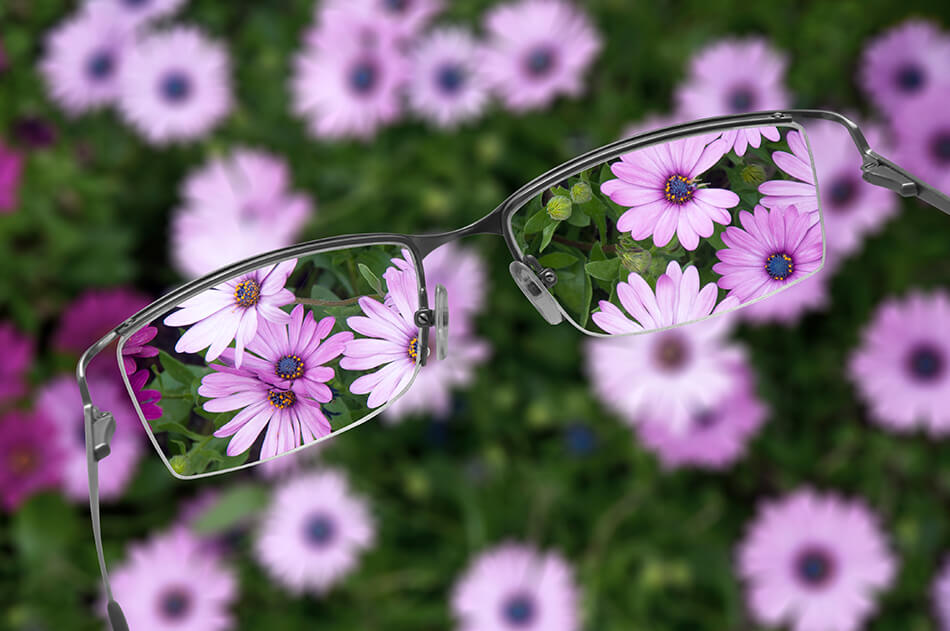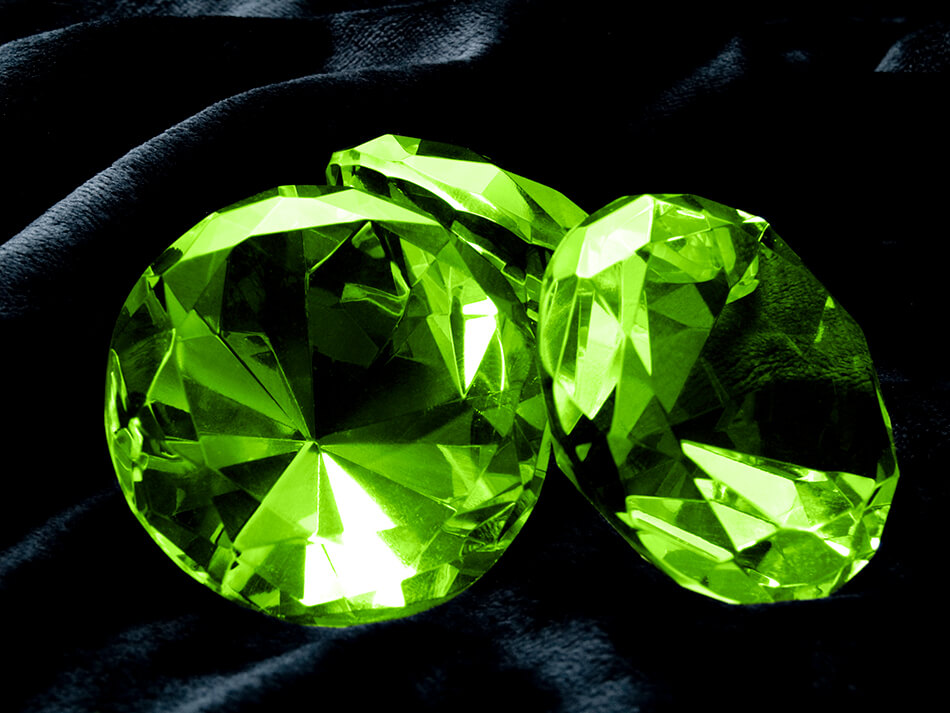Corrective Lenses: Where They Came From and Where They’re Going

What do emeralds, quartz, crystal, glass, and plastic have in common? They’ve all been materials for corrective lenses. Imagine using an emerald for better vision!
Corrective lenses have changed considerably through the years. Not only are they made of high-tech materials, but they correct a wider variety of vision problems.
Historical Materials Used for Corrective Lenses

People have been trying to correct their vision for almost 2,000 years! As you can imagine, the materials used changed dramatically over this time. Let’s take a look:
- Emeralds: All the way back in 60 AD, Nero, the Emperor of Rome, used an emerald to improve his vision. He held an emerald up to his eyes so that he could view the gladiator fights more easily. However, no one is really sure if this improved his vision, or blocked the sun. Perhaps this was the predecessor for sunglasses?
- Quartz: Fast forward to the 10th century and the monks in medieval Europe. These monks used something called reading stones to help them read. These reading stones were made of transparent quartz which magnified text. Eventually, transparent quartz was used to make eyeglasses. The first pair we have a record of was in Italy sometime around 1286.
- Crystal: At first, eyeglasses contained only expensive materials. They were status symbols for the wealthy.
- Glass: Eventually, lenses shifted to materials that were affordable. Glass became the most prominent material shortly after the printing press was invented in 1440. Now that more people could read, the need for eyeglasses increased. This was especially true among the mass population. Therefore, expensive lens materials became a thing of the past.
Materials for Eyeglasses Today

Even today, manufacturers still use glass for eyeglass lenses. Why? Because lenses made of glass are affordable and resist scratches. They also do not distort colors. Nonetheless, glass is not a popular material for those with a strong prescription. The stronger the prescription, the heavier the lenses. Plus, glass lenses break easily.
For this reason, most eyeglass lenses are some type of plastic. The advantages of plastic lenses are, that they’re lightweight and thinner than glass. However, the higher quality plastic lenses do cost more.
A polycarbonate plastic lens is perfect for children and those that play sports. This is because they are difficult to break. They also make strong prescriptions lightweight.
Just as important as the material of the lens, are the new coatings available for lenses. For instance, eyeglass lenses can now have:
- Scratch-resistant coating: This is good for soft materials
- UV-protective coating: This allows eyeglasses to protect the eyes from harmful UV rays
- Anti-reflective coating: This gets rid of the glare from digital screens. When glare is reduced, so is eye fatigue.
Hard Contact Lens Materials
Eyeglasses are not the only corrective lenses made from plastic. Hard contacts are made from polymethyl methacrylate (PMMA). In addition to contact lenses, shatterproof windows also contain PMMA. You might know this glass as Plexiglas, Perspex, or Lucite.
Hard contact lenses provide great vision. However, they are not good for the eye because they do not let oxygen through. Plus, they are difficult to get used to. Due to these disadvantages, few people still wear hard contacts. Instead, they wear gas permeable lenses.
Like the old-fashioned hard lenses, gas permeable lenses are made from plastic. In fact, they look almost identical to PMMA lenses. However, these lenses are better for the eyes because oxygen flows through to the eye. Additionally, they feel more comfortable because they fit closer to the eye than PMMA lenses. Finally, they provide sharp vision, especially when compared to their soft contact counterparts.
Soft Contact Lens Materials
At the same time that gas permeable lenses came to market, manufacturers began making soft contact lenses. Also made from plastic, these lenses use a water-based, gel-like plastic called hydrogel.
Because these lenses are thin, they more easily conform to the eye. They were extremely popular because they were easy to wear. Soft contacts are far more comfortable than rigid contacts, especially at first.
Over time, hydrogel lenses advanced. New lenses contain silicone hydrogel. This advanced plastic allows even more oxygen to reach the eye. They are now the most popular type of contact lens sold in the United States.
Interestingly, some brands created hybrid contacts. These are a combination of gas permeable material in the center and silicone hydrogel on the edges. This provides both comfort and better vision. Although they have such great advantages, these lenses are not very popular. This is probably because they are difficult to fit and they cost more than other lenses.
Contact Lenses of the Future
The future of contact lenses is amazing. In the past few years, contacts have changed considerably. We now have daily disposable contacts that you throw away each day. We also have extended wear contacts worn in the eye continuously for up to 30 days. Contacts can now also help those with a variety of vision problems. These include astigmatism, presbyopia, and even color blindness.
If it’s been a while since you considered contact lenses, take another look. You may find new technologies are addressing your vision challenges.

Several companies have patent applications for contact lenses that do more than help someone see better. Here are a few:
- Drug-dispensing contact lenses: These daily disposable contacts will contain eye drops for diseases such as glaucoma. Many patients find it difficult to put in drops. Others do so ineffectively, with a majority of the drop leaving the eye with tears. This new contact effectively delivers the medication directly to the eye.
- Contacts with electronics: These contact lenses will have electronics that project images for the user. These images could be maps, speech translation, or even email.
- Contact lenses with sensors: In the works are contacts containing sensors that monitor the human body. The hope is to have a contact lens that can monitor cholesterol or blood glucose levels.
- Contact lenses with cameras: One company hopes to create a contact lens with a miniature camera to help the blind. The camera would recognize friends’ faces in a crowd, “see” and then talk about landmarks in the area and more.
As you can see, the future of contact lenses goes far beyond seeing better. Who knows what future corrective lenses will look like or contain!
Are Weekly Contact Lenses Right for You?
Now you know about the history and projected future of vision corrective lenses. You might be wondering which contact lenses are right for you! Some people find that weekly contacts are the answer. Others prefer to wear daily lenses or extended wear lenses. The best way to find out what is best for you is to speak to an eye care professional.
After having an exam, your eye doctor will give you a prescription. They will also talk with you about the best corrective lenses to use for your needs.
Corrective lenses have come a long way in the past 2,000 years. It’s exciting to think about what the next 2,000 will hold. Continue to see your eye doctor regularly to learn of new advances in contact lens materials — the future is coming up fast!
